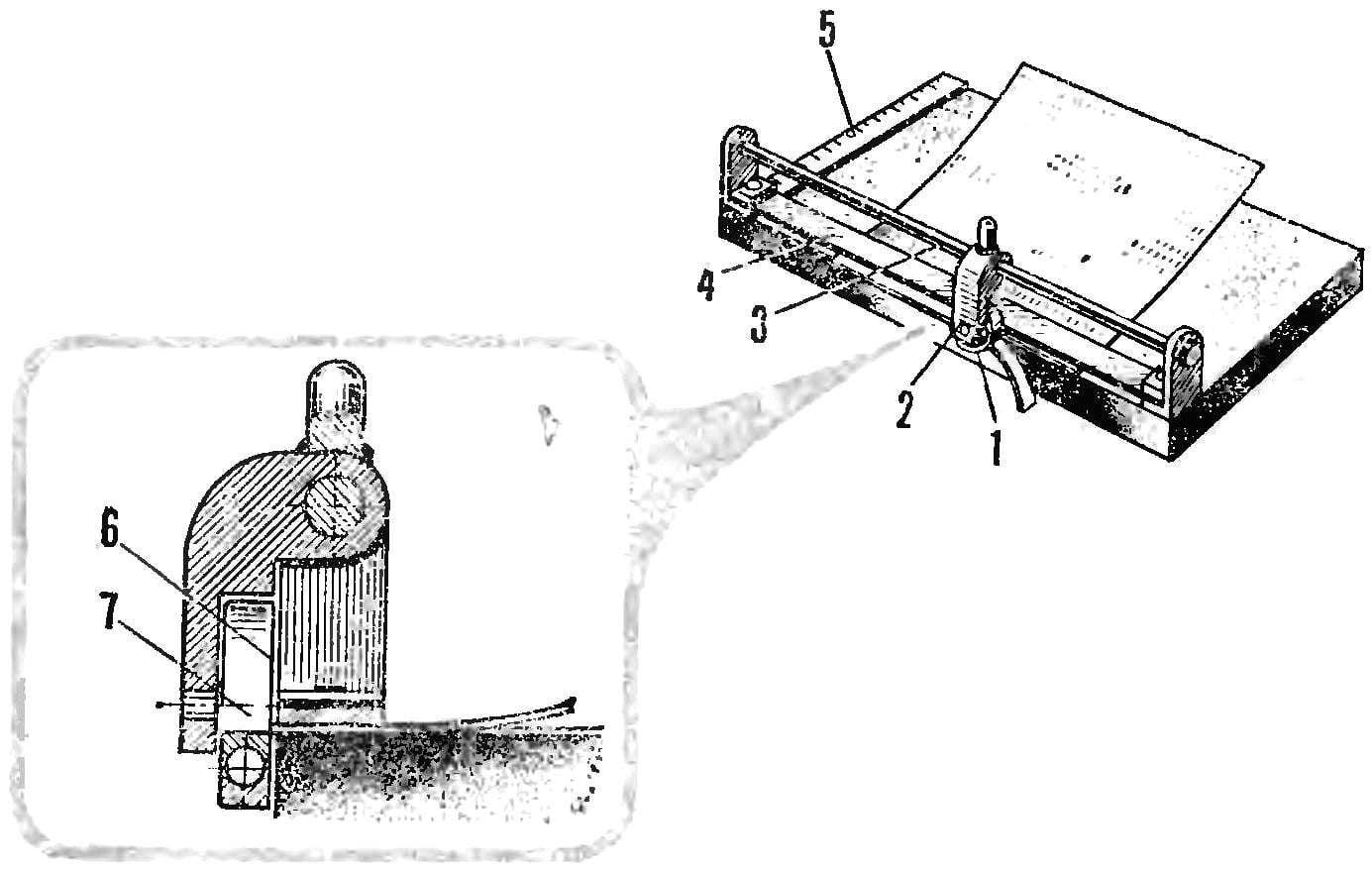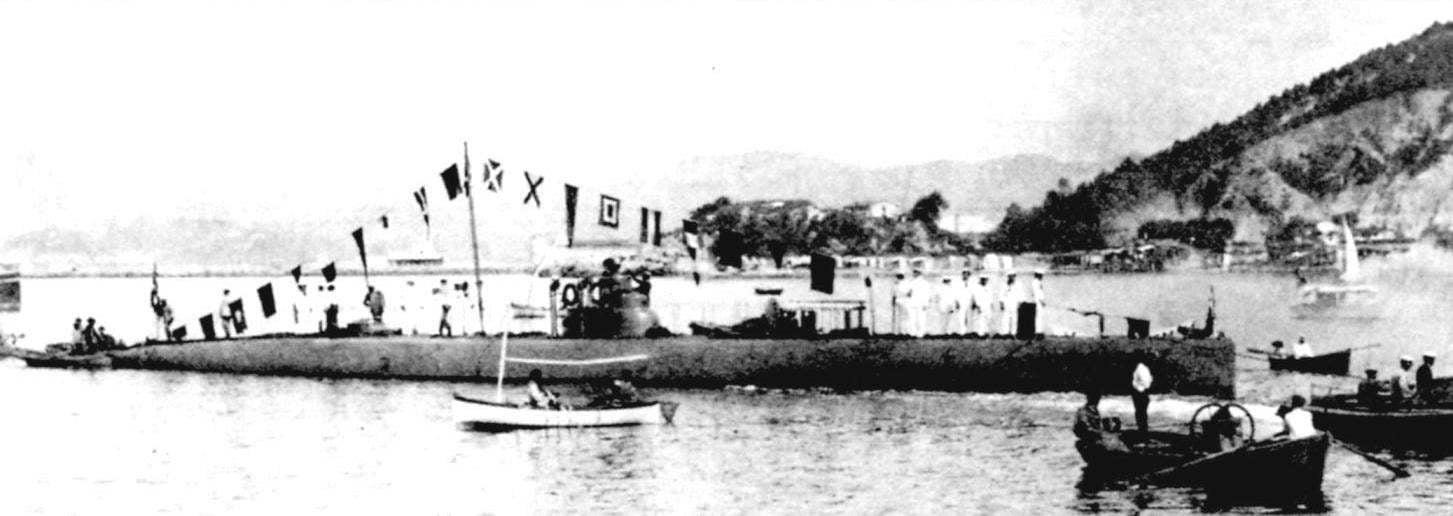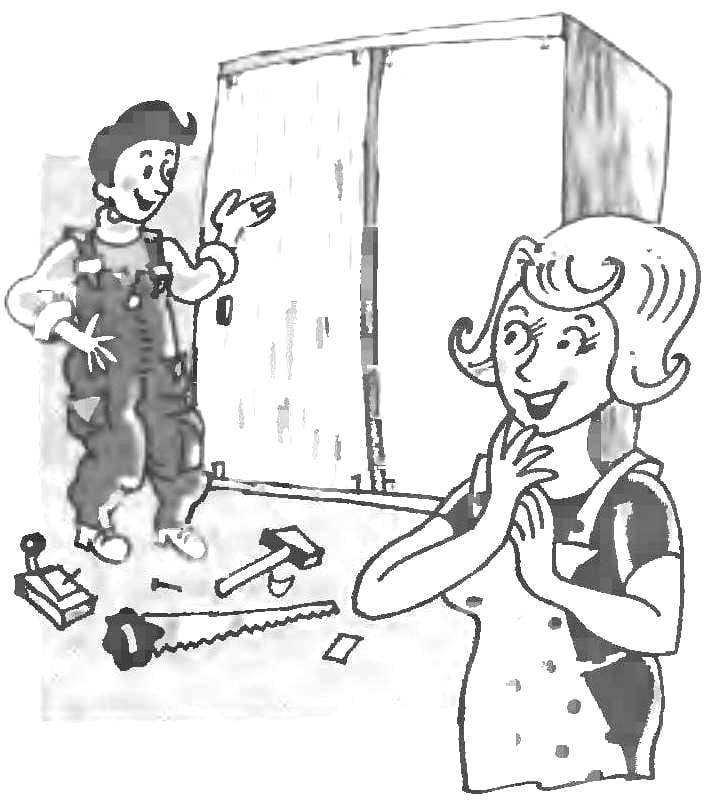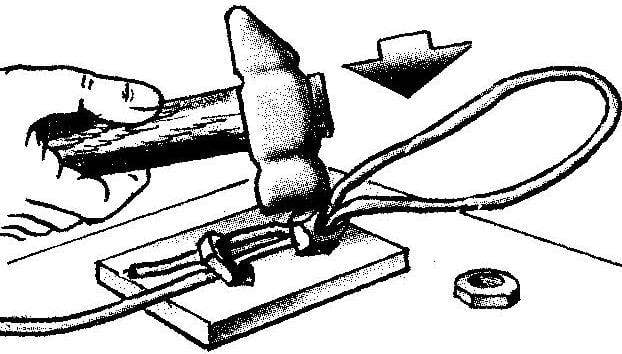 Anti-aircraft interceptor missile NIKE-HERCULES MIM-14B. Source options for most anti-aircraft missiles designed in the 1950s “on both sides of the ocean”, become missiles manufactured during the Second world war in Germany. Despite the fact that the German “wasserfall”, “schmetterlinge”, “rheintochter”, etc. do not have time to participate in combat operations, their prospects as a new type of weapon was not subject to any doubt. But after a careful study of the Germans captured samples of the rockets and documentation there are new technical capabilities to create such weapons. The more targets for them has become more serious in developing the “cold war” anti-aircraft missiles would become an insurmountable obstacle in the way of bombers with nuclear bombs.
Anti-aircraft interceptor missile NIKE-HERCULES MIM-14B. Source options for most anti-aircraft missiles designed in the 1950s “on both sides of the ocean”, become missiles manufactured during the Second world war in Germany. Despite the fact that the German “wasserfall”, “schmetterlinge”, “rheintochter”, etc. do not have time to participate in combat operations, their prospects as a new type of weapon was not subject to any doubt. But after a careful study of the Germans captured samples of the rockets and documentation there are new technical capabilities to create such weapons. The more targets for them has become more serious in developing the “cold war” anti-aircraft missiles would become an insurmountable obstacle in the way of bombers with nuclear bombs.
Read more
 Not find, perhaps, a car or complicated mechanism which isn’t used ball bearings: they are embedded in devices and engines, airplanes, and tractors, bringing accuracy, reliability and durability. And suddenly — an unexpected metamorphosis: the ball turned into the destroyer, has become a cutting tool. The device, manufactured on its basis, can be used for cutting writing and photographic paper.
Not find, perhaps, a car or complicated mechanism which isn’t used ball bearings: they are embedded in devices and engines, airplanes, and tractors, bringing accuracy, reliability and durability. And suddenly — an unexpected metamorphosis: the ball turned into the destroyer, has become a cutting tool. The device, manufactured on its basis, can be used for cutting writing and photographic paper.  Not find, perhaps, a car or complicated mechanism which isn’t used ball bearings: they are embedded in devices and engines, airplanes, and tractors, bringing accuracy, reliability and durability. And suddenly — an unexpected metamorphosis: the ball turned into the destroyer, has become a cutting tool. The device, manufactured on its basis, can be used for cutting writing and photographic paper.
Not find, perhaps, a car or complicated mechanism which isn’t used ball bearings: they are embedded in devices and engines, airplanes, and tractors, bringing accuracy, reliability and durability. And suddenly — an unexpected metamorphosis: the ball turned into the destroyer, has become a cutting tool. The device, manufactured on its basis, can be used for cutting writing and photographic paper. 

 Included in the First world war later than the other great (or applying for this role) powers, Italy was behind them in many branches of naval Affairs. And probably not due to a lack of creative ideas and their own theorists and designers, but because of the “little things” of a technical nature, the usual for countries that are somehow chained to the lack of resources and backwardness of the material base. This fully applies to the submarine fleet of the Mediterranean Kingdom.
Included in the First world war later than the other great (or applying for this role) powers, Italy was behind them in many branches of naval Affairs. And probably not due to a lack of creative ideas and their own theorists and designers, but because of the “little things” of a technical nature, the usual for countries that are somehow chained to the lack of resources and backwardness of the material base. This fully applies to the submarine fleet of the Mediterranean Kingdom.
 Letters a lot. One of them is to “brand” the forms of various enterprises and institutions, others on pieces of paper torn from a student notebook. But the questions are all about the same: the readers are interested in where, when and how you can get comprehensive information about gliders and hang gliding. We started in 1968 talking about a new kind of motorless flying has generated huge interest and gained the scope is truly inclusive. This, in our opinion, quite natural and not surprising: the level of technical training of young people is now high enough that even at home to build their own full-fledged glider. A shortage of necessary materials also does not stop enthusiasts of hang gliding. Difficulties in other: there is good, detailed and accurate drawings, which could produce details of the glider and the lack of experience and technological skills very often negates the attempt to make a dome (the sail). Reach extremes. In a letter to the seventh-grader Vladimir Nikitin of Sumy region photography barefoot boys. He flies with a small hill on a hang glider, made of spruce and covered with pieces of old red slogan.
Letters a lot. One of them is to “brand” the forms of various enterprises and institutions, others on pieces of paper torn from a student notebook. But the questions are all about the same: the readers are interested in where, when and how you can get comprehensive information about gliders and hang gliding. We started in 1968 talking about a new kind of motorless flying has generated huge interest and gained the scope is truly inclusive. This, in our opinion, quite natural and not surprising: the level of technical training of young people is now high enough that even at home to build their own full-fledged glider. A shortage of necessary materials also does not stop enthusiasts of hang gliding. Difficulties in other: there is good, detailed and accurate drawings, which could produce details of the glider and the lack of experience and technological skills very often negates the attempt to make a dome (the sail). Reach extremes. In a letter to the seventh-grader Vladimir Nikitin of Sumy region photography barefoot boys. He flies with a small hill on a hang glider, made of spruce and covered with pieces of old red slogan.

 Built-in wardrobe good because its manufacturing is at least twice less material than conventional Cabinet, and in terms of capacity, it is much more, as it is usually make the height from floor to ceiling.
Built-in wardrobe good because its manufacturing is at least twice less material than conventional Cabinet, and in terms of capacity, it is much more, as it is usually make the height from floor to ceiling.

 Anti-aircraft interceptor missile NIKE-HERCULES MIM-14B. Source options for most anti-aircraft missiles designed in the 1950s “on both sides of the ocean”, become missiles manufactured during the Second world war in Germany. Despite the fact that the German “wasserfall”, “schmetterlinge”, “rheintochter”, etc. do not have time to participate in combat operations, their prospects as a new type of weapon was not subject to any doubt. But after a careful study of the Germans captured samples of the rockets and documentation there are new technical capabilities to create such weapons. The more targets for them has become more serious in developing the “cold war” anti-aircraft missiles would become an insurmountable obstacle in the way of bombers with nuclear bombs.
Anti-aircraft interceptor missile NIKE-HERCULES MIM-14B. Source options for most anti-aircraft missiles designed in the 1950s “on both sides of the ocean”, become missiles manufactured during the Second world war in Germany. Despite the fact that the German “wasserfall”, “schmetterlinge”, “rheintochter”, etc. do not have time to participate in combat operations, their prospects as a new type of weapon was not subject to any doubt. But after a careful study of the Germans captured samples of the rockets and documentation there are new technical capabilities to create such weapons. The more targets for them has become more serious in developing the “cold war” anti-aircraft missiles would become an insurmountable obstacle in the way of bombers with nuclear bombs.
 Rigging centerboard yacht “salute” consists of two sails (mainsail and headsail), mast, standing and running rigging. Mast are called wooden parts of weapons (“Salute” sail type “Guara” is the mast, boom and gaff). Standing rigging — forestay and shrouds, running — Director the jaw-Gardel (tackle for lifting Hafele), boom-mainsheet and the jib sheets (the ends that serve to control the sails). They are made usually of hemp rope (tight entourage or the special weave) thickness 10— 12 mm. Drawings of parts of the mast and their sizes are shown in figure 1.
Rigging centerboard yacht “salute” consists of two sails (mainsail and headsail), mast, standing and running rigging. Mast are called wooden parts of weapons (“Salute” sail type “Guara” is the mast, boom and gaff). Standing rigging — forestay and shrouds, running — Director the jaw-Gardel (tackle for lifting Hafele), boom-mainsheet and the jib sheets (the ends that serve to control the sails). They are made usually of hemp rope (tight entourage or the special weave) thickness 10— 12 mm. Drawings of parts of the mast and their sizes are shown in figure 1.
 The tillers built in circle of “Technical creativity” Yakovlevskaya Polytechnic. Designed for ploughing all types of soils – both light and heavy. Ease of management makes the job tiring. The design turned out well, the care required is minimal and the performance and quality is excellent, and therefore how to repair and improve are required.
The tillers built in circle of “Technical creativity” Yakovlevskaya Polytechnic. Designed for ploughing all types of soils – both light and heavy. Ease of management makes the job tiring. The design turned out well, the care required is minimal and the performance and quality is excellent, and therefore how to repair and improve are required.
 This simple device will allow, if necessary, to obtain the desired rivet diameter and length. Steel angles from rolled steel clamped in a vise, with the line connector mark and drill holes of the required depth and diameter. Now, loosening the grip, inserted into the hole of the workpiece is of soft wire, the diameter of which corresponds to the desired size of rivet. The device is again clamped in the vise, and workpiece clench; the excess head is removed with a file.
This simple device will allow, if necessary, to obtain the desired rivet diameter and length. Steel angles from rolled steel clamped in a vise, with the line connector mark and drill holes of the required depth and diameter. Now, loosening the grip, inserted into the hole of the workpiece is of soft wire, the diameter of which corresponds to the desired size of rivet. The device is again clamped in the vise, and workpiece clench; the excess head is removed with a file.